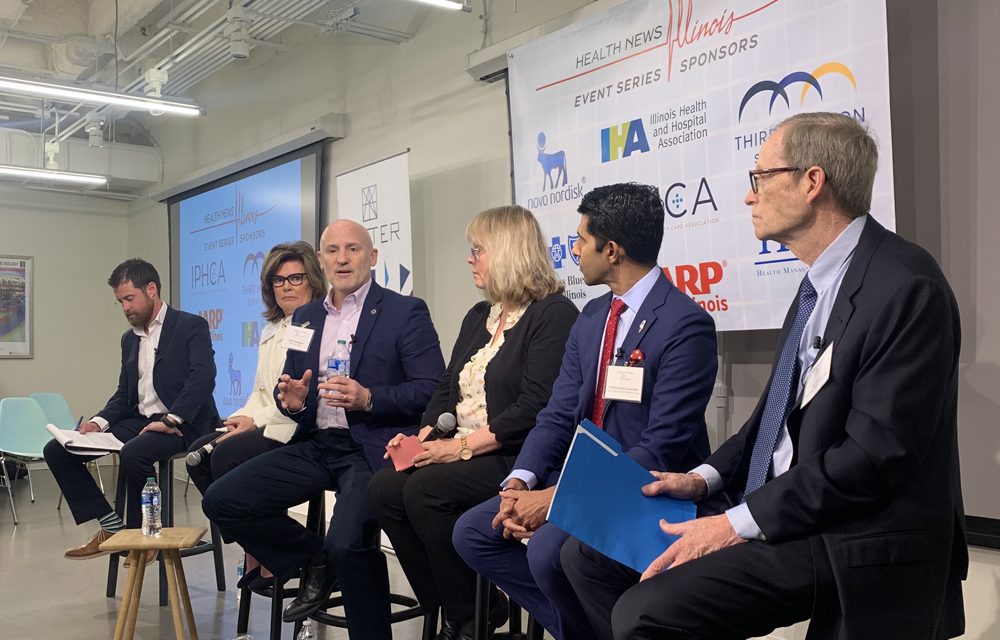
Providers, payers embrace value-based care

Providers and health plans are embracing value-based care as a way of boosting outcomes and lowering costs.
“Value-based care is the tool — it’s the mechanism,” Kelly Cunningham, the state’s Medicaid director, said Wednesday at a Health News Illinois panel in Chicago. “It’s really the steps that we can take working together as partners to improve healthcare for our customers.”
It can also increase job satisfaction. For many providers, adding value to patients’ lives is one reason why they joined the profession.
“That’s why they’re clinicians, right? It’s all about value for them, but we’re asking them to do a lot,” said Don Calcagno, the chief population health officer at Advocate Health.
Calcagno and Lisa Wagamon, president of Rush Health, said value-based care works best with collaboration.
“It really helps to have a uniform group of (doctors) and practitioners who are moving in the same direction,” Wagamon said.
In the event a patient needs to visit a different provider, having an underlying communication infrastructure helps the entire medical team stay on the same page, she said.
While value-based care has the potential to lower costs for institutions, it can require an initial investment from health systems.
“Early on, it’s not unusual for some types of value programs to actually slightly increase the cost,” Calcagno said, citing the resources needed to build up data analytics and information technology infrastructure.
Dr. Art Jones, principal at Health Management Associates, clarified that value-based care isn’t just about saving money in the long run and doesn’t have to do with providing less care to patients. It’s about getting care to the patients who need it while addressing health issues before they become harder to mitigate.
“I want to make sure we don’t get this idea that managed care, the way it makes money, is by denying services,” Jones said. “(Managed care) is really us taking a holistic approach, not just screening for (social determinants of health) but addressing (social determinants of health).”
As an example, Jones said health leaders could spend savings on helping housing-insecure populations find places to stay instead of spending more money on repeated emergency room visits.
Panelists acknowledged why providers may hesitate to transition.
“You’re not going from fee-for-service to value-based care overnight,” said Krishna Ramachandran, divisional senior vice president of healthcare delivery at Blue Cross and Blue Shield of Illinois.
“Providers are used to getting paid per service. They’ve been successful with that,” Jones said. He encouraged providers to consider taking “baby steps” toward comprehensive value-based care models.
– Elizabeth Casolo for Health News Illinois









